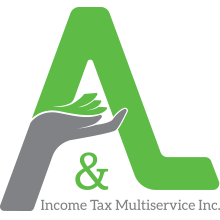
How Effective Are Payroll Taxes?
Payroll taxes are a highly effective way to raise revenue, for three main reasons:
First of all, the payroll tax base is very broad. Payroll taxes apply to all wages and salaries up to a cap of $118,500, which nearly 83% of wages and salaries fall under. Furthermore, unlike the personal income tax, payroll taxes do not include dozens of deductions, exemptions, and credits that narrow the tax base. This means that payroll taxes can raise a large amount of revenue at a relatively low rate, to the tune of over $1 trillion a year.
Second, due to the inelasticity of the supply of labor, payroll taxes generate a comparatively small amount of deadweight loss compared to other forms of taxation. This means that payroll taxes lead to a relatively small amount of economic inefficiency, since the quantity of labor in the market does not dramatically decline as a result. Overall, payroll taxes do much less economic harm than taxes on capital. This is evidenced by our analysis of Senator Bernie Sanders’ tax proposals, whose payroll tax rate increase raised nearly four times as much revenue as his proposed increases on capital gains and dividends, but with a fourth less of the impact on GDP.
Finally, payroll taxes are very hard to evade. According to the IRS’ criminal enforcement data, investigations into payroll tax abuse make up less than 3 percent of all tax investigations, despite payroll taxes generating about a third of all federal tax revenue.
Problems and Potential Solutions
A common argument regarding federal payroll taxes is that they are regressive. That is, above a certain amount, the more income one earns, the smaller the share of one’s income goes to payroll taxes. This is because, as mentioned previously, only the first $118,500 of wages are subject to Social Security payroll taxes. For example, a worker making $50,000 annually in wages pays 6.2 percent in direct employee-side Social Security payroll taxes (0.062 x $50,000 / $50,000), but a worker making $250,000 annually in wages pays about 2.94 percent in direct employee-side taxes (0.062 x $118,500 / $250,000). While the federal tax system as a whole is quite progressive, payroll taxes run contrary to this trend.
However, there are options to reduce this regressivity. According to a 2015 Tax Foundation paper, “Options for Broadening the U.S. Tax Base”, removing the payroll tax cap entirely would lead to $1.8 trillion in additional federal revenue over ten years on a static basis, and primarily impact high-earners. Furthermore, this additional revenue could be used to lower marginal rates on corporate and personal income, growing both wages and GDP by 2.2%, while still raising revenue.
In a perhaps more dramatic reform, the Tax Policy Center (TPC) has recently released a report on the effects of replacing the employer-side payroll tax with a value-added tax, or VAT. This would increase the progressivity of payroll taxes for two main reasons: first, unlike the current employer-side payroll tax, the tax base of a VAT includes not only labor income but also supernormal returns to capital. Second, a VAT would not include a payroll cap. The TPC estimates that this change would lower average effective tax rates for almost all taxpayers except the top 5 percent of income earners. In addition, the broader payroll tax base would allow for a lower rate to raise the same amount of revenue (4.1 percent instead of 7.65 percent), which would shrink the effect of employer-side payroll taxes on individuals’ work decisions.
Conclusion
Overall, payroll taxes are a significant source of federal revenue, thanks to their broad base, the low elasticity of labor, and low rates of evasion. Although the payroll tax is regressive, there exist reform proposals to increase the tax’s progressivity.
When it comes to what should be the primary role of taxation, to raise revenue, the payroll tax does an excellent job. However, as is the case with almost the entirety of our tax system, there is room for improvement.


